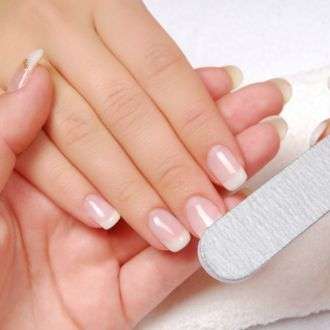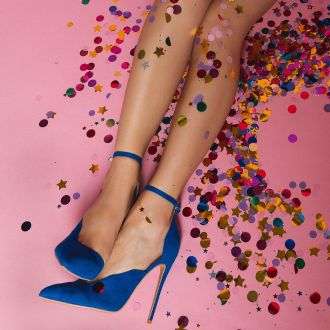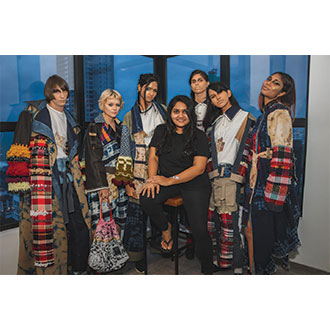
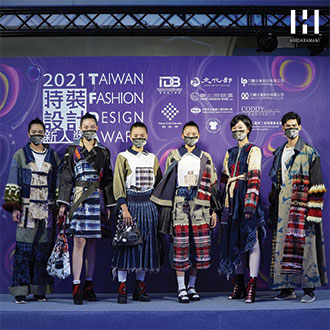
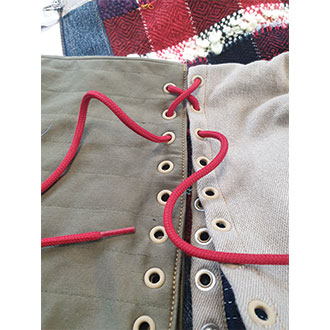
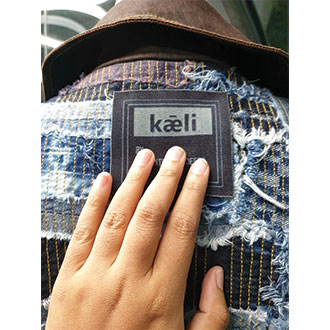

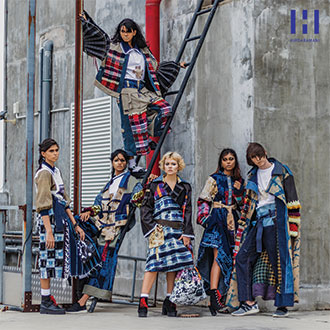
Ruwanthi Pavithra Gajadeera is a 25-year-old sustainable fashion designer who in 2021, with her ‘kǣli–A Sustainable Collection’, became the first South Asian to win the Taiwan Fashion Design Award (TFDA).
This prestigious international competition takes place annually, showcasing young enthusiastic fashion designers like Ruwanthi whose creative and innovative design concepts are exerting a powerful influence on the fashion industry.
To congratulate Ruwanthi and to chat about her commitment to the environment, Hi!! invited this passionate advocate for ethical fashion to explain the importance of sustainable design, and to tell us a little more about her work.
Ruwanthi, well done for your marvellous accomplishment and our best wishes for 2022! You've had quite a journey into the world of fashion and it's such an honour to chat with you. Can you tell us how you feel today to see all your hard work and your sustainable brand, 'kǣli’, recognised by top people in the industry?
Thank you very much for such warm wishes. To be honest it has been a great 2021 for me. Being part of the international competition really made me grow as a fashionmonger. I’m truly humbled by how people recognise me as a sustainable designer, and their words of encouragement have truly illuminated my future.
kǣli's name originated amid the collection’s development. Looking back and reflecting on the designing process I realised that it resembled putting pieces of fabrics together, just like fitting pieces into a puzzle. Hence, I named it kǣli.
kǣli attempts to combine environmental and social features to create garments that make an impact while benefiting the wearer by providing a durable and quality product. At the same time, through responsible designing kǣli empowers marginalised artisans and, most importantly, mother earth.
Yes, learning heritage crafts and recreating them was truly a passion of mine. I travelled around the country to meet and learn from some truly legendary artisans. They helped me to grasp the fundamentals behind each craft. And because – fortunately – I did not have a single teacher, I was able to appreciate and understand the various styles different artisans incorporate into their work. I feel that this greatly influenced me to develop my own style.
I was especially happy that I managed to incorporate Dumbara panels into the garments. Dumbara mats were this year entered on the UNESCO ‘Representative List of the Intangible Cultural Heritage of Humanity’. I think I was able to enshrine my experiences of travelling in the hill country which is the home of Dumbara weaving.
Some of the Beeralu work and all handloom panels were woven by me, along with crochet and handknits. For natural dyeing, I used indigenous plants with Ayurvedic properties.
Back in 2017 the Meethotamulla garbage dump disaster, which unfortunately took 27 lives, was my “woke moment”. People shouldn’t pay with their lives for our over-consumerism and bad design. During my undergraduate years, I devoted myself to sustainability and it was alarming for me to learn how the fashion industry is one of the biggest environmentally polluting industries in the world, second only to crude oil. I realised that if I was to be a designer, I wanted to be a sustainable one and that my creations shouldn’t harm anyone physically or emotionally at any point in their lifecycle.
It was the offcuts created through the manufacturing process. Sri Lanka has an apparel-oriented economy and makes a considerable amount of foreign earnings thanks to fast fashion. However, underneath the surface, we can see that a majority of these production plants produce a lot of offcuts and as a country, we haven’t developed proper mechanisms to deal effectively with these waste fabrics.
Moreover, fast fashion brands rely on polyester, known to contaminate soil and waterways with microplastic pollution. This is a widespread issue in the Global South and, if don’t solve this now through better design based on ethical guidelines, future generations will have to suffer greatly for our failures.
I believe it is transparency. I think the most insightful thing I have learned so far, from reading academic journals to attendance at webinars, is the importance of transparency. I appreciate that it’s very tempting to use the word ‘sustainable’, but I also realise that a big responsibility comes with that. I always rely on reputable research into the methods I practise, such as zero-waste techniques and other low impact techniques like laser printing, bleach-free washing and natural dyeing.
It's been said that “the most sustainable garment is the one you already have in your wardrobe” and, if it has become worn out, you can always try to upcycle it. I think it's really good to invest in quality garments without following fast trends and big brand names. As consumers, we have to read the labels and consider how the garment was produced. Timeless fashion is made with high-quality sustainable materials with built-in longevity which will allow you to wear it longer. In addition, take care of your garments while washing them.
I moved at a very young age to a school in Colombo so I've barely spent time with my parents. Fortunately, I was able to be with them in Padiyathalawa, Ampara, to watch the London Graduate Fashion Week Livestream. So the proudest moment I cherish is the joy I saw that day in their faces when they saw my collection on the runway.
Looking back at history, we South Asians have always practised the fundamentals of recycling. Our mothers would mend our clothes so many times before they were considered old garments. Once something was no longer wearable, we would use it as a carpet or to make in to rags. Some communities even go further and process old clothing to produce ash to make cosmetics. However, consumerism has gotten the better of us. We are slowly moving towards looking at clothes as something disposable. I don’t think it’ll be difficult for Sri Lankan consumers to handle this shift towards eco-fashion, especially because we are value seekers and sustainable labels have continuously proven themselves for their value.
I think there should definitely be changes in education. I did a UK undergraduate degree, and it did not have a single module focused on sustainable design, although the degree itself gave me the creative freedom to develop my own style and practise sustainable methods. Hopefully, in the future, they will expand the curriculum with a dedicated module and make sustainability one of the grading criteria.
However, there are many free resources and certification programs open for fashion students such as the 'Redress Pathway Course' where students can learn about sustainable fashion and its latest advancements.
In addition, I think the students themselves have a responsibility to expand the scope of their knowledge and incorporate this into their graduate work, something which most degree courses encourage and expect you to do.
Yes, it’s wonderful to see the evident enthusiasm among young designers to incorporate sustainable design practices into their work. I firmly believe that macro problems can only be solved through collective effort.
Where can we find the best inspiration when looking for sustainable fashion?
Step outside: that’s the best place to look for inspiration. Nature is known to perfect its constructs through the evolutionary process, and therefore there’s much to learn from nature. Secondarily, culture and heritage also play a significant role, especially in understanding how my garments impact on and interact with other stakeholders.
For kǣli, Japan influenced me immensely, especially because it was the last trip I managed to take before the COVID-19 lockdowns. I was able to draw inspiration from paddy fields to manhole covers, as well as local design practices. The traditional stitching practice used to produce patchwork fabric Boro and Shibori inspired me to use waste fabric, giving them new life. And concepts such as wabi-sabi – which is seeing beauty constantly in the unfinished, and in imperfection – inspired me to develop my brand aesthetics.
Love the clothes in your wardrobe. I think the best thing you can do is to take care of your clothes, that’s the smallest, yet the most impactful thing one can do in terms of becoming an eco-friendly consumer.
I love to paint with watercolours, and I also find it very relaxing to watch videos of people painting.
Ever since I remember, I have hugely enjoyed cooking and baking! I love to be a host to my friends and family, something which I greatly miss because of the COVID pandemic.
Currently, I'm working as a Fashion Designer at Hirdaramani Discovery Lab, which is a sustainability-focused apparel development centre. We use environmentally sustainable state-of-the-art technology for denim washing and casual wear laundry. It's aimed at design innovation, integrating the latest technologies such as laser printing, laser etching, nanospray washing and ozone bleaching. In 2022, I look forward to working with our team to play our part in actively solving this puzzle of sustainable fashion.
I am also working on zero-waste pattern making and I think it’s a feasible option to make garments affordable for everyone. Currently, sustainable brands are becoming too expensive for the average consumer to afford. Although I won’t be able to match fast fashion prices, I personally believe that sustainable fashion brands should be financially inclusive as well.
Thank you, Ruwanthi. It’s been great speaking with you and hearing about your sustainable fashion journey. We’ll look forward to seeing your next collection and talking to you again.
Follow Ruwanthie Gajadeera:
https://www.instagram.com/ruwanthi.design/
https://www.linkedin.com/in/ruwanthi-gajadeera/
https://twitter.com/rugajadeera
https://www.youtube.com/watch?v=d_4dtoJMI4k
#fashion #fashioninterview #sustainablefashion #eco-freindly #fashiondesigner #designer #collection #southasian #srilanka #apparel #brands #designinnovation #srilankan #ethical #ecofashion



